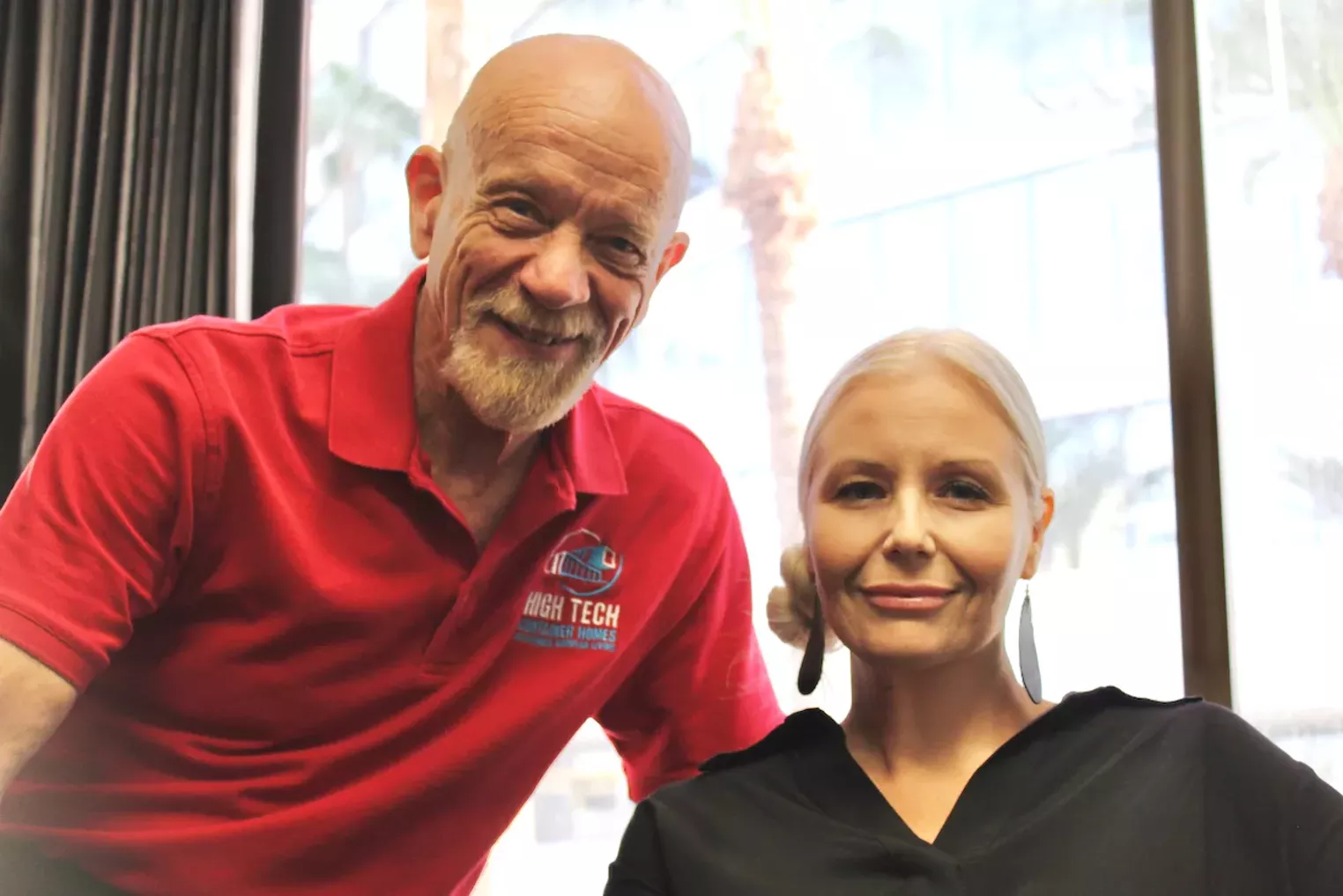Phoenix is becoming a hub for container home living
Owners, developers and even media personalities think outside, ahem, on the inside the box and transforming Metro Phoenix into a premier hub for container homes.
This year, Phoenix saw North America’s tallest container tower make its downtown debut and a container apartment complex was opened in Apache Junction. From Washington Street to West Valley, there are many more containers to come.
These tiny homes are made from modified and repurposed shipping containers that otherwise might have ended up rusting in a landfill. Stack and weld the containers together, and voila, you have new digs at a huge price.
Zillow estimates the average traditional house in phoenix costs $427,586. The average container home, on the other hand, costs between $10,000 and $35,000, according to Realtor.com.
The low price is why a local resident decided to build five on his three-acre property in Cave Creek.
You can often find Joe “Bronz” Perez singing gulf and western music at one of the many casinos in the Phoenix metro area. But these days, you can also find it inside a shipping container.
When Perez first walked into his Cave Creek property last year, it was “like stepping back to the days of wagons,” he said. Instantly, he knew this was the perfect location for a scenic container complex he dubbed “Bronz Canyon.”
The property was once a ranch, the end point of a horse trail that wound its way to Prescott. Now the land perched on top of a mesa is a container home building area. Once built, each of the five tiny glass-fronted dwellings will offer a different view of downtown Cave Creek.
Perez plans to rent the container homes on Airbnb.
Across the valley in Glendale, Denver-based real estate developer Ruben Grado recently purchased a property intended for multi-family housing and plans to build 60 shipping container apartments on the site.
“My heart is in Arizona,” said Grado, a native of Phoenix. “It’s the perfect place to provide a container home community for people who need it.”
Grado said the apartments will be eligible for the city’s Section 8 program, which provides low-income tenants with vouchers that pay a portion of their rent. The City of Phoenix Housing Department also offers financial incentives to owners that rent to participants in its voucher program.
In today’s hot housing market, container living seems like a more affordable option. The United States imports millions more containers than it exports every year, resulting in 100 million unused containersthe idea of using them to create budget housing seems almost too good to be true.
Recent portrayals of these rectangular residences on TV and in movies do not accurately convey what a shipping container home really is – a cost-effective and sustainable new way of living.
The HGTV program container houseswhich aired for a single season in 2016, mostly focusing on metal mansions, including a 2 million dollar estate in Vancouver which included about a dozen containers. Then there’s Steven Spielberg’s 2018 film Loan player onewhich depicts people living in a destitute neighborhood where rectangular houses are piled on top of each other.
Stephen Deubel is building this durable modular home from shipping containers in the town of Williams near Flagstaff.
High-tech container houses
A new look at affordable housing?
In reality, most container homes aren’t lavish or slummy.
Phoenix-based interior designer Mel Alva has been invited to star on HGTV container houses. She turned down the opportunity. “A lot of this stuff is just for TV,” she said. “It’s not the real world.”
Alva recently teamed up with longtime home improvement personality Stephen Deubel to set the record straight with their new online radio show, Covered wagon universe.
The show, which premiered Sept. 15, aims to educate Arizonans about the benefits of sustainable living with a focus on container living. “In the United States in general, everything is overkill,” Alva said. “You buy in bulk. You stack the closet. We don’t need to live this way anymore.
The pair also want to draw attention to containers as a solution to the housing shortage in the valley. “Whatever we do with the show, we want to be able to help the community,” Duebel said. “We want to contribute to the city’s low-income housing goal. »
The City of Phoenix released its housing plan last year. In what Mayor Kate Gallego called “our city’s most ambitious housing goal ever,” leaders plan to create 50,000 new homes by 2030.
Since World War II, US military used shipping containers to ship a variety of supplies to overseas bases and troops. These containers are converted into training facilities, offices and living quarters for the soldiers. Government officials in European cities such as Amsterdam have already hugged container homes for social and student housing, but no luck in the United States yet.
“Government needs to create affordable housing, and this is the way to do it,” Alva said. “They can be completely modernized and architecturally beautiful and still be considered low-income housing.”
Covered wagon universe gaining momentum thanks in part to Deubel, who has been a home improvement radio personality in Phoenix since 2005. Deubel was the voice of Image Home Improvement Fairaired from 2014 to 2019 against Rosie Romero’s DIY show on KTAR, Rose at home.
“Times are changing,” Deubel said. DIY projects are always cool, but container homes are the talk of the day.
Boxcar Universe aired Saturday at 8 p.m. Episode #2 is scheduled for October 1.


Comments are closed.